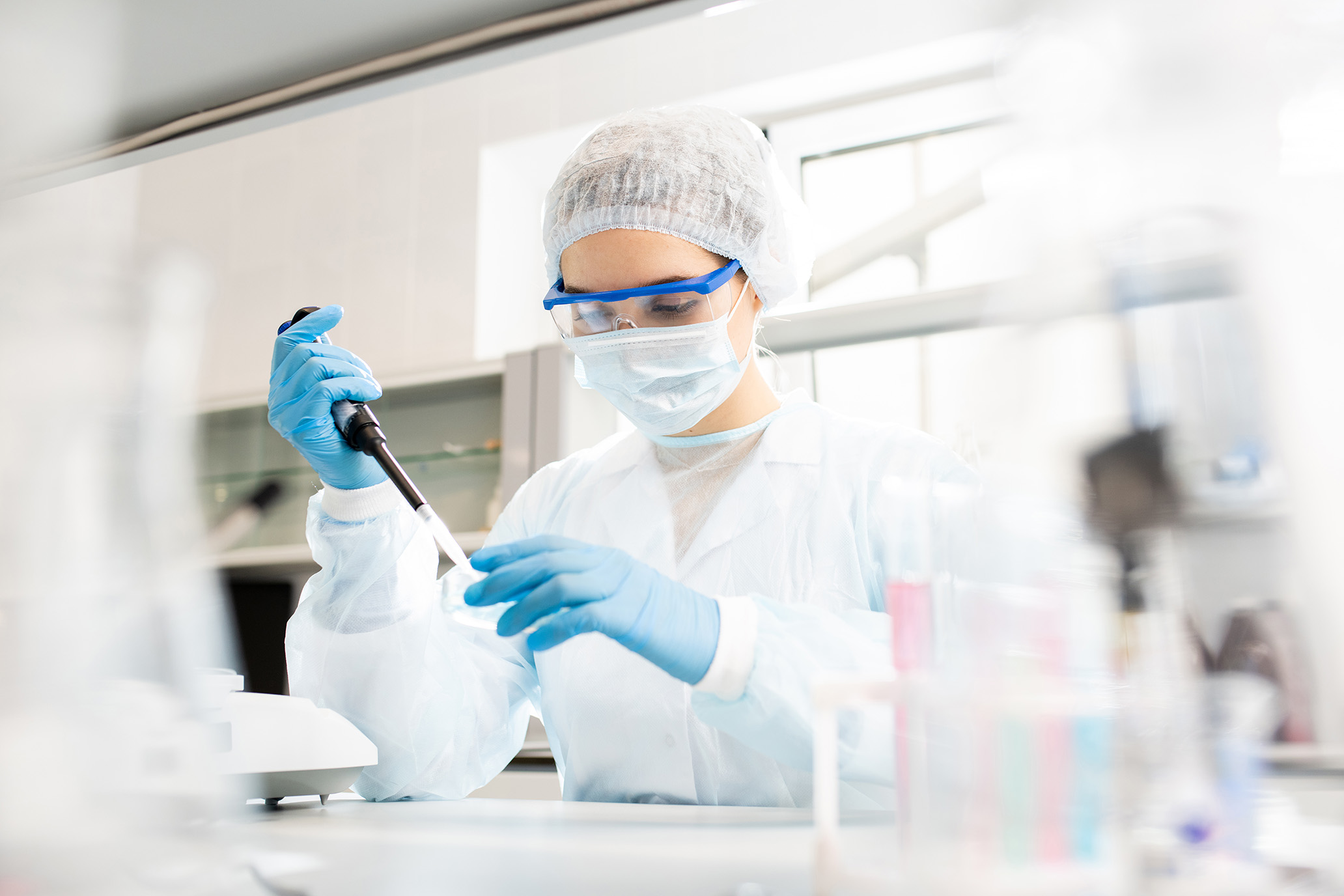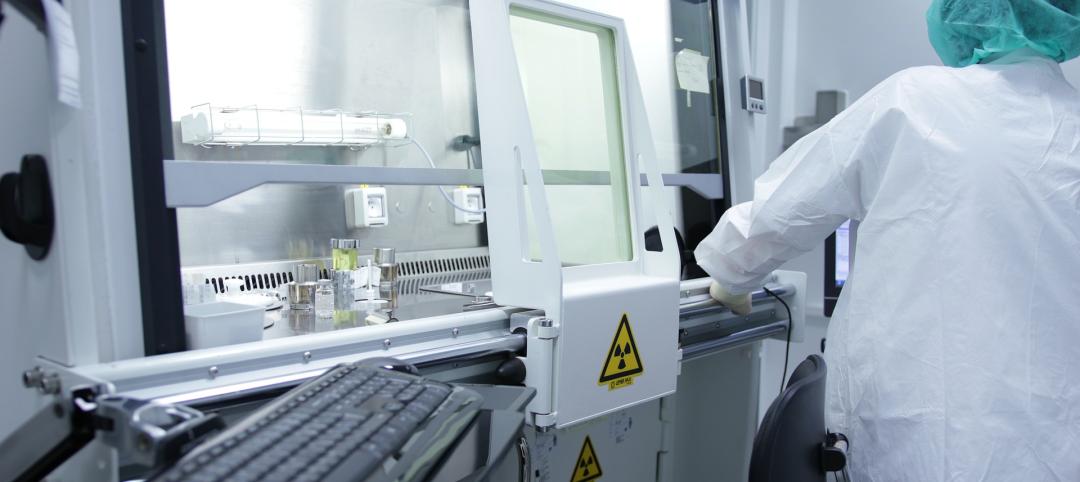A groundbreaking study conducted by ARC – Advanced Research Clusters, HOK, and the University of the West of Scotland (UWS), has revealed that half (48.1%) of all survey respondents who work in laboratory settings identify as neurodivergent, more than double the global average (20%) and more than a quarter (25.5%) identify as autistic, twenty-five times the UK average (1%). Because of this, spaces designed to foster technological and scientific innovation are inadvertently stifling the potential of the brilliant minds working within them by not addressing the sensory processing needs of the occupants.
To date, there has been a dearth of research into creating inclusive scientific spaces. Focused on science and technology innovators in laboratory settings, this study aimed to identify how individuals respond to sensory stimulation in current lab designs. It revealed how neurodivergent individuals are particularly sensitive to auditory, visual and tactile elements, exposing that many existing laboratories are not designed to address these needs holistically. These sensory distractions are linked to cognitive interruptions such as loss of focus and a disruption of creativity and innovation, which directly impacts employee engagement, satisfaction, and productivity.
The study also revealed that a third (29.9%) of the next generation of innovators consider themselves neurotypical. Without inclusive laboratory designs, the scientific research profession risks undermining these brilliant minds, leading to reduced productivity, poor recall, burnout, stress and recruitment and retention challenges.
Results for Designing Neuroinclusive Laboratory Environments
Dr. Edward Edgerton from UWS said: “Often, neurodivergent employees will manage their work environments by hiding signs of their neurodiversity. However, even when their neurodiversity is recognized, their workplaces can still be exhausting, impacting negatively on their performance and wellbeing. Few organizations have considered neurodiversity workspace design particularly for laboratories.”
ARC supports over 300 science and tech organizations and over 10,000 innovators. The anonymised study included lab-based users from ARC’s network, including the renowned Harwell Science Campus, science departments at the University of Oxford and participants from selected European science campuses.
HOK, a leading global architecture firm that specializes in designing neuroinclusive spaces, partnered with ARC and UWS for the research. The team explored ways to identify sensory preferences and challenges and to develop design principles critical to the performance, sense of belonging and overall satisfaction of the people using laboratory spaces. Studies have shown that spaces that support diverse thinking enhance creativity and innovation by 20 percent.
Kay Sargent, HOK’s director of thought leadership, interiors, said: “You don’t have to be neurodivergent to be annoyed by sound, temperature, or light. But what might be annoying for someone who is neurotypical might be debilitating to someone with ADHD, autism, or other neurodivergence. It’s about making spaces more functional for 100% of the people. By creating neuro-flexible spaces, we’re enabling some of the world’s brightest minds to come together, allowing super-creative people to find their own personal, comfortable space.”
Design Strategies for Neurodiverse Laboratories
Design strategies identified by HOK that should be implemented in future laboratory developments include: providing individuals with choices, the right level of sound and auditory controls to support specific tasks, creating spaces with access to natural daylight and biophilic elements, reducing visual clutter, having adjustable ergonomic furniture, incorporating areas within the lab to retreat or reset, and introducing collaborative areas and spaces for doodling.
Jenny Gardner, ARC’s development director said: “At ARC, we understand the importance of creating spaces that support our members in solving the world’s greatest challenges. Until now the industry has failed to address the needs and experiences of neurodiverse individuals, prioritizing sterile, modern looks and open-plan co-working spaces without areas to decompress. We’re committed to changing this by designing inclusive scientific spaces that enable our members to deliver life-changing science.”
Daisy Shearer, a Quantum physicist and neurodiversity advocate, said: "Ensuring scientific workspaces are designed with neuro-inclusion in mind is an often-overlooked aspect to accessibility and the EDI conversation. It's great to see these discussions happening around neurodiversity at ARC, so we can create inclusive spaces where all neurotypes can thrive. Good research and innovation stems from those who work on it, ensuring a diverse group of people can access these careers is key."
Related Stories
Laboratories | Sep 20, 2023
Life sciences construction market is poised for a comeback: JLL
The life sciences commercial real estate market has undergone a reset this year but is well positioned to be the comeback kid as capital sources grow more confident and green shoots emerge, according to JLL’s 2023 Life Sciences Industry and Real Estate Perspective.
Laboratories | Aug 24, 2023
Net-zero carbon science center breaks ground in Canada
Designed by Diamond Schmitt, the new Atlantic Science Enterprise Centre (ASEC) will provide federal scientists and partners with state-of-the-art space and equipment to collaborate on research opportunities.
Giants 400 | Aug 22, 2023
Top 115 Architecture Engineering Firms for 2023
Stantec, HDR, Page, HOK, and Arcadis North America top the rankings of the nation's largest architecture engineering (AE) firms for nonresidential building and multifamily housing work, as reported in Building Design+Construction's 2023 Giants 400 Report.
Giants 400 | Aug 22, 2023
2023 Giants 400 Report: Ranking the nation's largest architecture, engineering, and construction firms
A record 552 AEC firms submitted data for BD+C's 2023 Giants 400 Report. The final report includes 137 rankings across 25 building sectors and specialty categories.
Giants 400 | Aug 22, 2023
Top 175 Architecture Firms for 2023
Gensler, HKS, Perkins&Will, Corgan, and Perkins Eastman top the rankings of the nation's largest architecture firms for nonresidential building and multifamily housing work, as reported in Building Design+Construction's 2023 Giants 400 Report.
University Buildings | Aug 7, 2023
Eight-story Vancouver Community College building dedicated to clean energy, electric vehicle education
The Centre for Clean Energy and Automotive Innovation, to be designed by Stantec, will house classrooms, labs, a library and learning center, an Indigenous gathering space, administrative offices, and multiple collaborative learning spaces.
Laboratories | Jul 10, 2023
U.S. Department of Agriculture opens nation’s first biosafety level 4 containment facility for animal disease research
Replacing a seven-decade-old animal disease center, the National Bio and Agro-Defense Facility includes the nation’s first facility with biosafety containment capable of housing large livestock.
Laboratories | Jun 23, 2023
A New Jersey development represents the state’s largest-ever investment in life sciences and medical education
In New Brunswick, N.J., a life sciences development that’s now underway aims to bring together academics and researchers to work, learn, and experiment under one roof. HELIX Health + Life Science Exchange is an innovation district under development on a four-acre downtown site. At $731 million, HELIX, which will be built in three phases, represents New Jersey’s largest-ever investment in life sciences and medical education, according to a press statement.
University Buildings | May 17, 2023
New UC Irvine health sciences building supports aim to become national model for integrative health
The new College of Health Sciences Building and Nursing & Health Sciences Hall at the University of California Irvine supports the institution’s goal of becoming a national model for integrative health. The new 211,660-sf facility houses nursing, medical doctorate, pharmacy, philosophy, and public health programs in a single building.
Sustainability | May 11, 2023
Let's build toward a circular economy
Eric Corey Freed, Director of Sustainability, CannonDesign, discusses the values of well-designed, regenerative buildings.

















